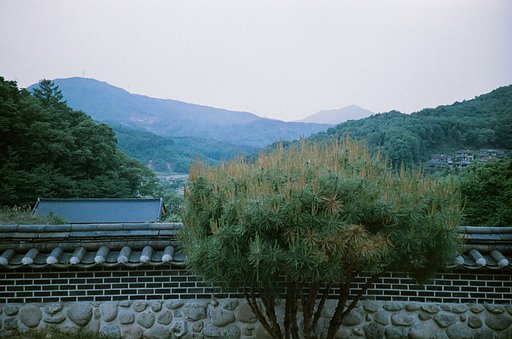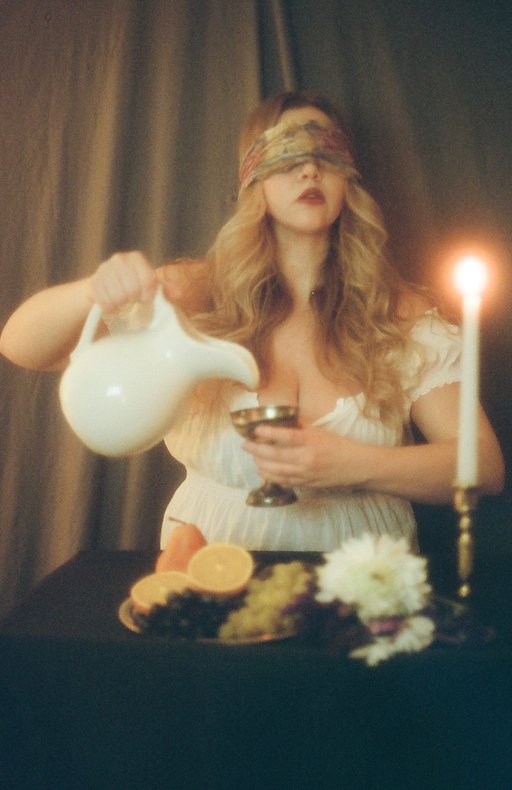An Alternative Universe: Kyoto In LomoChrome Turquoise
3 12 Share TweetHave you ever thought about what life would be like if you lived in an alternative universe? Maybe you daydream about a life where the rules are reversed and colors could give different meanings – where red means go, and where the sky is not blue, and plants are not green. Thinking about this, Lomographer Norbi sets out to photograph iconic historical structures and make us see them in new colors. On his latest trip to Kyoto, we see how @Norbi uses the Lomochrome Turquoise to color shift some of Kyoto’s most famous sites and show them in an alternative universe.
Kyoto was the capital of Japan for more than a thousand years before the seat of power got moved to Tokyo in the late 19th century. Its construction was based on Xian, the capital city of China’s Tang Empire with Kyoto’s first residents moving in during the 7th century. Since it became the capital in 794, the city flourished as arts, poetry, architecture, and religion began to mold the city and bring out its culture.
Kyoto is home to many of Japan’s most important and culturally significant structures that tell the story of the country’s rich history. Visiting Kyoto, one must not miss out on “Kinkaku-ji Temple” also known as the Golden Pavillion, which was a former vacation home turned Buddhist temple, the Kyoto Imperial Palace which was the original home of the Imperial family of Japan, and the Fushimi Inari Taisha Shrine dedicated to the Shinto God of rice which was one of the earliest structures in Kyoto dating to 711.
Besides the architecture, the mixing of the old culture with the newer technological and modern areas, and with residential communities make Kyoto such a unique and culturally rich city that it would excite anyone.
In terms of photography, it wasn’t actually the shrines. I loved just wandering around town, and capturing a bit of real life. Outside of photography, it’s hard to go to Kyoto and not talk about the food! A walk through Nishiki market, grabbing a few little snacks along the way, is a must.
LomoChrome Turquoise as a film challenges what you know about shooting color film. Its color shifting is drastic and turns everything on its head. Though people may not be used to how unique the colors can be, experimenting with trial and error is the way to get this film stock to be part of your arsenal. Talking to @norbi, this is what he had to say about using the film stock.
I think it's fair to say it was an experiment. I've seen great results, and also really uninteresting results, online. Development and scanning methods can both wildly change the results of any stock, so I wasn't sure what to expect out of my roll. When it came to shooting, I just knew I wanted to take full advantage of that orange/blue shift.
@norbi dared to use LomoChrome Turquoise to shoot some of the world’s most iconic historical sites and turn them into something new. Rather than the shining sparkles of the Golden Pavillion, the famous temple became much softer with blue hues mixed with white tones. Picturing the famous Fushimi Inari Taisha Shrine, the colors from the famous reds and oranges turns quickly into a mix of deep and faded blues. For @norbi, using these film stocks allows him to reimagine these timeless and legendary places in a new light, making it seem as if we are seeing these places for the first time.
In terms of iconic spaces and color shifts, I definitely went as extreme as possible on that one. Fushimi Inari Shrine is famous the world over for its vibrant orange gates, so I thought the results would be seen as an inverted version of reality. Truth is that I don’t think it turned out so “weird” in the end, as blue paint with green decorations is kinda nice. The color shift is very natural. You don’t quite know something is wrong until you take another look. So maybe not instantly recognizable as Kyoto’s torii in the wrong colors, but as a funky unknown shrine where everything is blue.
Shooting iconic locations in a color-shifting and experimental film is not unheard of but it's something @norbi does incredibly well with this gallery of photos. Being inspired by these sets of photos it would be interesting to see more photographers play around with not just colors but even with angles, perspectives, and concepts when taking photos in some of the world’s most recognizable sites. @norbi leaves us with some tips on how to shoot the LomoChrome Turquoise.
It sounds obvious but find oranges and blues! Everything else comes out kind of muted and muddy. If nothing else, underexpose to get the sky a nice vibrant orange color. Of course, nothing is stopping you from just shooting daily life and enjoying seeing your town differently - there are no rules in photography! In terms of exposure, I metered all mine at 200 and I’m very happy with those results.
We thank @norbi for his photos. You can check out more of his work here at his LomoHome and even watch his photowalk of Kyoto. Got any stories about photographic historical or iconic sites and changing them? Tell us about it and comment down below!
written by rocket_fries0036 on 2023-03-10 #gear #culture #people #places #street #tourism #experimental #kyoto #architecture #japan #historical-sites #colorshifting #lomochrome-turquoise



































3 Comments